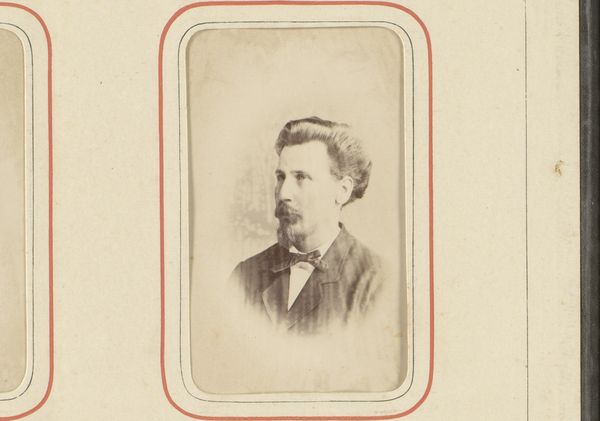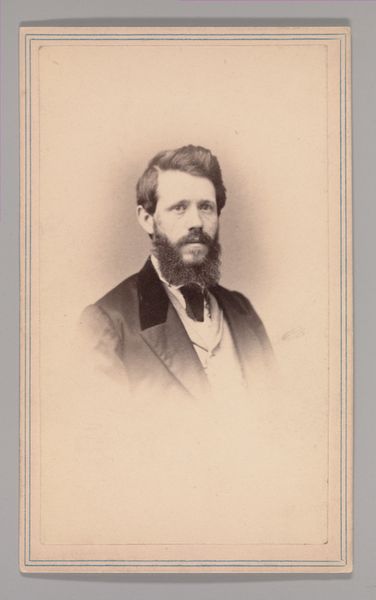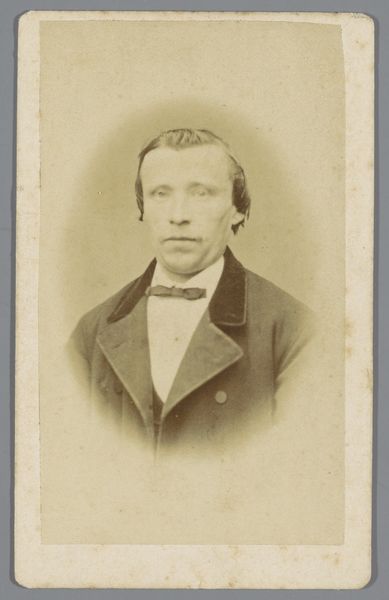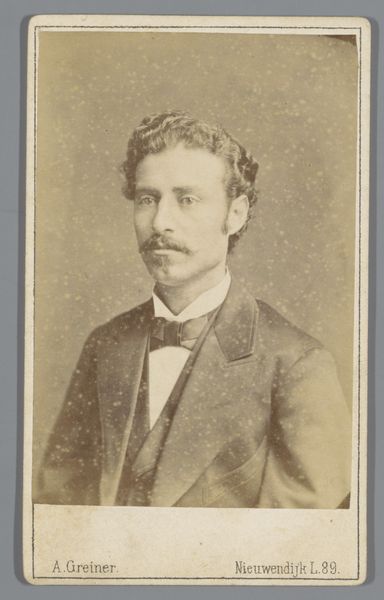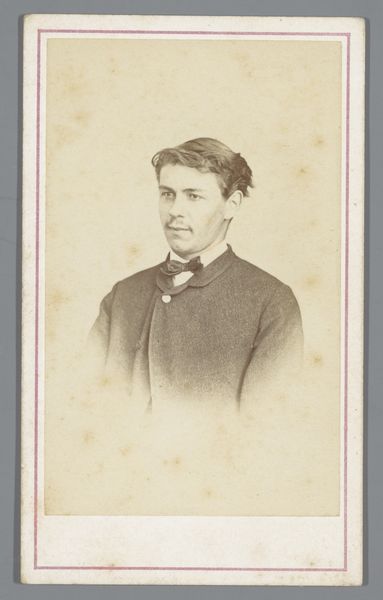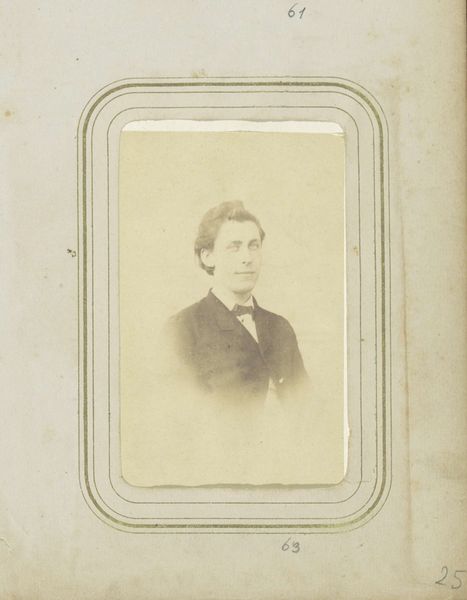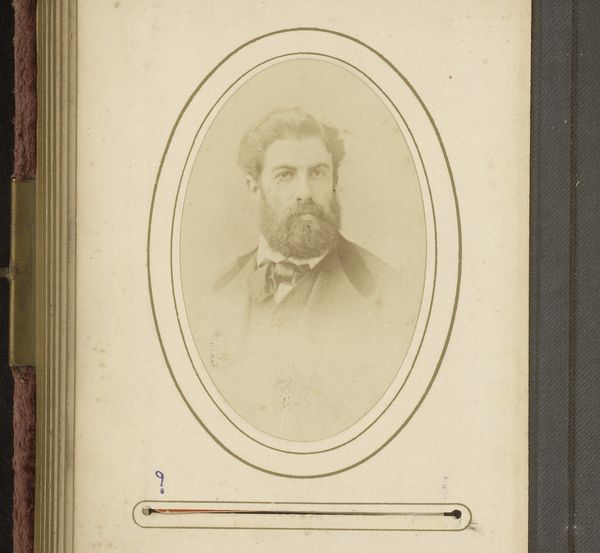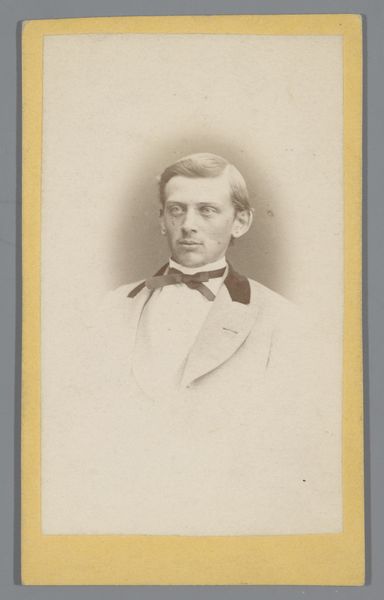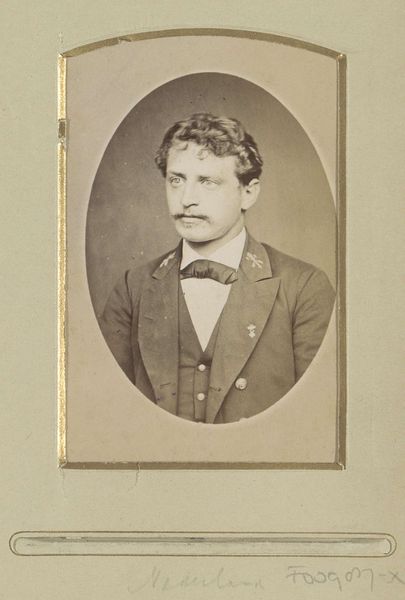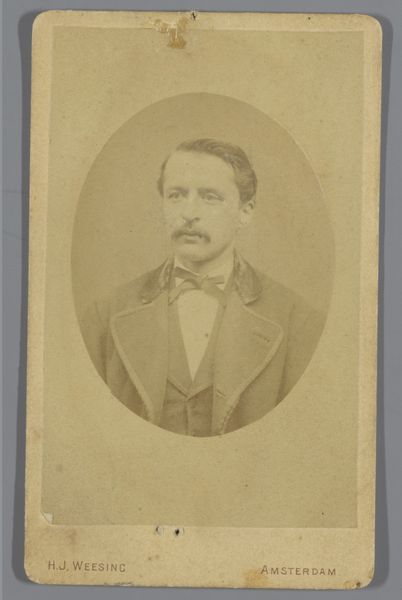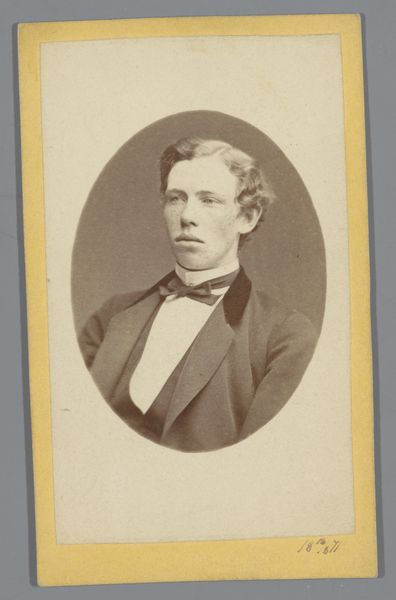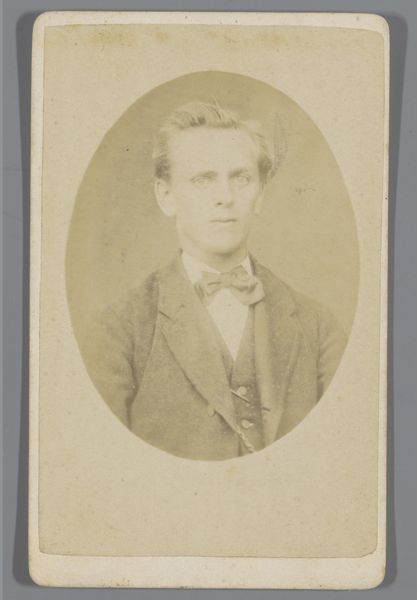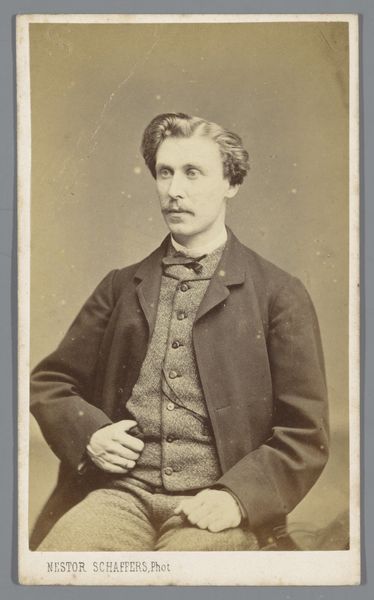
Dimensions: height 105 mm, width 63 mm
Copyright: Rijks Museum: Open Domain
August Rombaut made this albumen print portrait of an unknown, moustachioed man sometime in the late 19th century. During this period, photography was becoming increasingly accessible but still retained a sense of formality and status. The man’s attire—a dark suit, bow tie, and neatly styled hair—suggests he belongs to the middle or upper class. The photograph, presented in a vignette style, focuses on the sitter's face and upper body, which invites viewers to consider his identity and social standing. Made in Belgium, this portrait reflects the broader European trend of bourgeois self-representation through photography. The rise of commercial photography studios democratized portraiture, making it available to a wider segment of society than ever before. By examining the visual codes in play here, we can understand the social values and aspirations of the time. Delving into archival records, such as studio advertisements and social registers, might help us understand the function of photography within the context of 19th-century Belgian society.
Comments
No comments
Be the first to comment and join the conversation on the ultimate creative platform.
